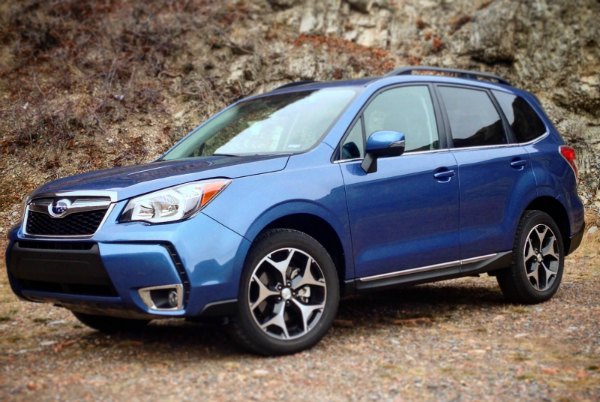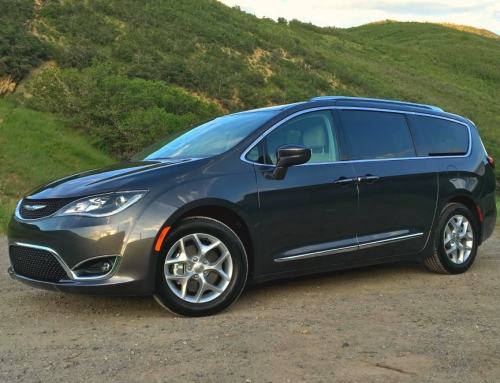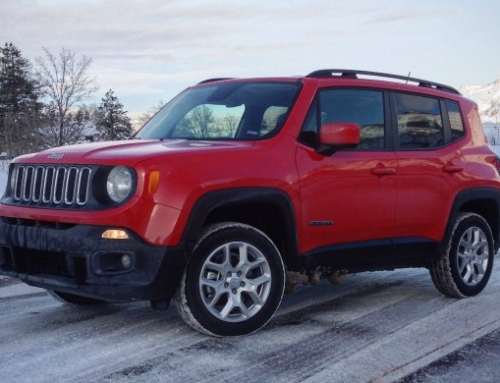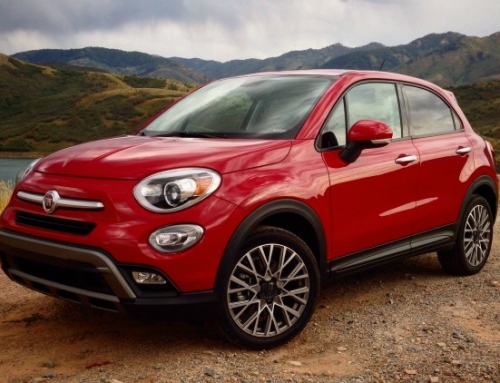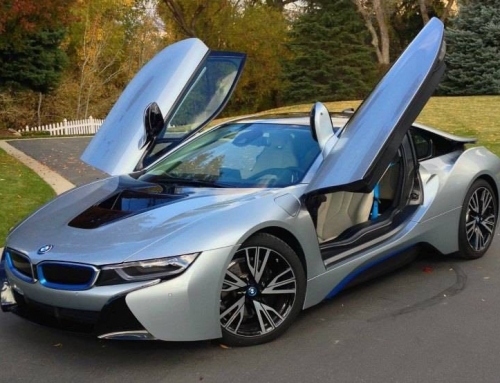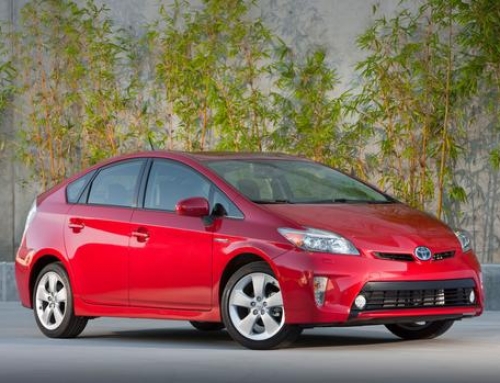Redesigned in 2014 and more attractive and capable than ever before, the 2016 Subaru Forester was an ideal vehicle when a raging blizzard hit Salt Lake City during my Monday commute. Snow was flying in all directions and I was able to test this all-wheel-drive crossover in rainy, snowy and icy conditions. The Forester was exceptionally planted and solid in the nastiest of conditions. Perhaps that’s why Subarus are as common in snowy climates as Gore-Tex coats and snowboards.
It also makes it easy to find five good reasons to drive Subaru’s tallest crossover.
Reason #1: Lots of Forester Trims
The 2016 Forester is more of a compact crossover than a wagon. However, I wouldn’t fault you if you describe the 2016 Subaru Forester as a big wagon, either. I’ve tested both the Subaru Outback and Forester, and the Forester is a bit smaller and less expensive than the Outback. But it still exhibits more car-like characteristics than larger SUVs. So call it what you will — just remember the Forester, like all Subarus, features all-wheel drive and longstanding devotion from Subaru aficionados.
The 2016 Forester is available in six trims. Pricing starts at $22,395 for the 2.5i and escalates all the way to $33,795 for the 2.0XT Touring model. Additional options or packages can inflate the price, but not too dramatically.
Rear passenger space is comfortable for two, and adequate for three if one of your passengers is a smaller person. The good news for families is that you can fit two car seats across the rear seat with room for a small passenger in the middle. Alternatively, you can easily fit a single car seat in the middle with room for two adults on the sides.
You get 43 cubic feet of space behind the rear seats and an excellent 74.7 cubes with the rear seats folded flat. That’s more than enough space to stow suitcases, duffel bags and winter clothing for a winter ski trip. Additional storage space is available in the many nooks and crannies found in the front doors, rear panels, and center console.
I tested the 2.0XT Touring version of the 2016 Subaru Forester. As the highest-end Forester, you get a well-appointed cabin that features heated leather seats, a quality stereo system with Sirius satellite radio, dual-zone automatic climate control, and a backup camera. With the addition of the Starlink navigation system and recommended EyeSight driver-assist system (a $1,395 upgrade), plus $210 for an auto-dimming rearview mirror and an $850 delivery fee, my tester topped the scales at $36,250.
Reason #2: Function Over Fashion
In harmony with the Subaru brand, the Forester is more functional than fashionable. Even the high-end 2.0XT Touring Edition seemed a bit sparse in terms of luxury touches. The leather seats were soft, adjustable and comfortable. They included electronic lumbar support and adjustments. Most important, they offered two levels of heat: high and low. During the week I tested the Forester, temperatures dropped to the teens multiple times, which made the heated seats a must-have feature.
There is a decent amount of hard plastic on the dash and center console, while the armrests on the doors feature a mix of hard plastic and soft surfaces. Initially, all that plastic was a bit off-putting. But the more I lived with the Subaru, especially during the wet, cold, wintry weather, the more I appreciated the utility of the plastic surfaces. When snow fell on the doors and even blew onto the dash, I simply wiped it off with my gloves and it looked as good as new. Score a point for pure function.
The Harman/Kardon audio system with Sirius satellite radio was good, but not amazing. What was amazing, at least to some passengers, was the Bluetooth audio integration. I sat down in the Forester, turned on the ignition, and music almost instantly began playing from the iPhone in my pocket. I gave the phone to the passenger and let him navigate through the songs. Soon we were streaming a Pandora mix from the Internet through the phone to the Forester’s speakers. Internet radio sounds good, especially if you don’t want to pony up the cash for a monthly satellite radio subscription (though I’ll argue it’s worth it if you have a longer commute).
The backup camera worked well, though the images displayed on the seven-inch screen are not as sophisticated in function as some rearview systems you’ll find in some vehicles.
Reason #3: Two Engines and Two Transmissions
Two engines are available on the 2016 Subaru Forester. The 2.5-liter four-cylinder is standard on the 2.5i, 2.5i Premium, 2.5i Limited and 2.5i Touring models and generates 170 horsepower and 174 pound-feet of torque. A six-speed manual is standard on the two base models or you can elect a continuously variable transmission (CVT) to improve fuel economy. That CVT is standard on all higher trims and earns an impressive 24 mpg in city driving and 32 mpg on the highway when paired with the 2.5-liter engine. That’s excellent for the class.
More horsepower and more torque awaits with the 2.0-liter turbocharged four-cylinder engine found in the 2.0XT Premium and 2.0XT Touring models. This mill makes 250 horsepower and 258 pound-feet of torque and feels downright powerful. Unfortunately for some drivers, that engine is mated exclusively to the CVT, which ensures better fuel economy but can take some of the excitement out of driving. Expect 23 mpg in city driving and 28 mpg on the highway for a combined 25 mpg rating.
My test model featured the turbocharged engine and had plenty of power but never felt particularly fast. I averaged only 20 mpg during my week behind the wheel, but much of that driving happened on snowy roads, which reduced speeds dramatically.
Reason #4: Impressive in the Snow and on the Open Road
The Forester is flat-out one of the best all-wheel-drive vehicles I’ve ever driven. Its size feels ideal for dangerous conditions. It’s not too heavy in the front or back, which ensures it doesn’t easily lose control on wet, snowy roads. The anti-lock braking system is also exceptional. I tested the Forester by accelerating the vehicle in a straight line in an empty, snow-filled parking lot, then slammed on the brakes. Unlike many cars that suddenly veer to the right or left in equally slippery conditions, the Forester held firm and stayed on the intended course. That sense of security when braking on a straight but snow-covered road is worth everything in helping keep you out of harm’s way.
Now you know why Subaru drivers love their cars.
Steering is responsive and the turning radius is tight. I was particularly impressed by the visibility out the front, side and rear windows. Blind spots are few and far between in the Forester. Throw in the rearview camera, and this is an easy vehicle to maneuver around town — whether you’re driving on a clear summer day or fighting whiteout conditions of a winter blizzard. The Forester earned my respect.
Reason #5: 2016 Subaru Forester Offers Top Safety and Excellent Reliability Ratings
The Insurance Institute for Highway Safety (IIHS) named the 2016 Subaru Forester a “Top Safety Pick+.” That means the Forester achieved top scores in all safety tests. You can expect lots of safety goodness including Subaru Symmetrical All-Wheel Drive, a rearview camera, four-wheel antilock braking system (ABS), daytime running lights, a full complement of airbags, a rollover sensor and more.
The National Highway Traffic Safety Administration awarded the Forester a five-star overall safety rating — also its highest rating.
The EyeSight Driver assist system is a recommended upgrade and is available on the 2.5i Premium, 2.5i Limited, 2.5i Touring and 2.0XT models. It constantly monitors traffic movement, manages cruise control, and lets you know if you’re veering outside your lane. One of the most valuable features is that it can automatically slow the Forester if it detects stationary objects ahead of you. My niece swears by the EyeSight system and is confident it has helped her avoid rear-end collisions more than once. She wouldn’t buy another vehicle without it.
In terms of reliability, Consumer Reports includes the 2016 Forester on its list of “Recommended” vehicles and expects reliability to be “Much Better than Average.”
A Great Choice for Snowy Climates
Subarus are ultra-popular in wet, snowy parts of the United States like the Rocky Mountains or the Northeast or Northwest. In Utah where I review cars, you can’t park a vehicle at any ski resort without passing at least a dozen or more Subies in the lot. Interestingly, Subarus of all types are relatively rare in the rest of the country.
The 2016 Subaru Forester is exceptional in the snow. It boasts outstanding safety and reliability ratings. Space is adequate for passengers and gear alike. The updated design is larger and more masculine than prior models. It’s not the perfect car for everyone, but I find myself asking, what’s not to love?
2016 Subaru Forester photo copyright Waterdog Media, Inc.
